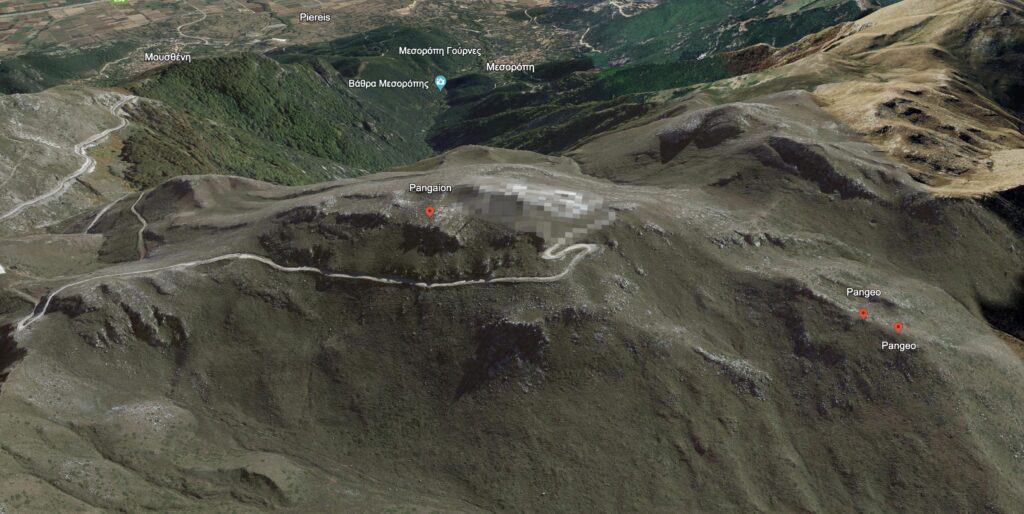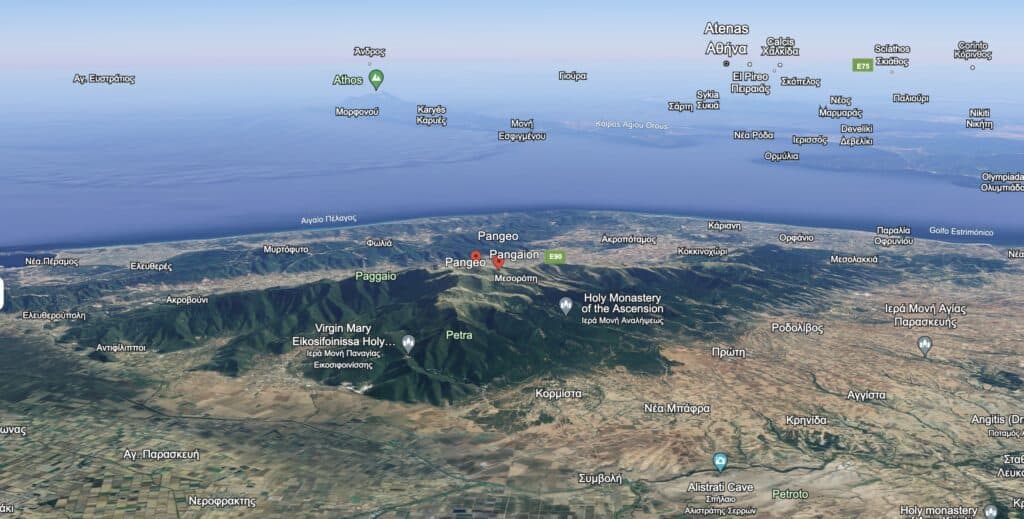Table of Contents
Location and Geography
Mount Pangaion, also known as Pangaeon or Pangaeum, is a mountain in northern Greece, located near the city of Kavala, within the region of Eastern Macedonia. It rises to an elevation of about 1,956 meters (6417 feet) and is part of the Rhodope mountain range. The mountain is known for its rich biodiversity and natural beauty, with a landscape characterized by dense forests, steep slopes, and rocky outcrops.

Historical Significance
Ancient History and Mythology
Mount Pangaion has been significant since ancient times, both historically and mythologically. In antiquity, the mountain was famed for its rich deposits of gold and silver, which were extensively mined by the Thracians, an ancient people who lived in the area. The wealth generated from these mines contributed to the prosperity of the Thracian tribes and later to the rise of the city of Amphipolis, a major ancient city in the region.
The mountain is also associated with several myths and legends. It was believed to be a sacred place dedicated to the god Dionysus, the god of wine, fertility, and religious ecstasy. According to Greek mythology, Dionysus was raised on the slopes of Mount Pangaion, and the mountain became a center of his worship, particularly among the Thracians who were known for their ecstatic rites and rituals.
Herodotus and Historical Accounts
The ancient historian Herodotus mentions Mount Pangaion in his accounts, noting its wealth in gold and silver and its significance to the local Thracian tribes. The mines on the mountain were so productive that they attracted the attention of various powers, including the Persians and later the Macedonians.
Philip II of Macedon
Mount Pangaion played a crucial role in the rise of Philip II of Macedon, the father of Alexander the Great. Philip exploited the gold mines of Pangaion to finance his military campaigns and to consolidate his power over Greece. The wealth generated from these mines allowed him to build a formidable army, which eventually led to the establishment of the Macedonian Empire.
Cultural and Religious Significance
Dionysian Worship
As mentioned earlier, Mount Pangaion was a major center of Dionysian worship. The Thracians, who inhabited the region, were known for their intense and mystical religious practices. The mountain’s secluded and wild nature made it an ideal location for the orgiastic rites associated with the cult of Dionysus. These rituals, which included music, dance, and intoxication, were believed to bring the participants closer to the divine and to the natural world.
Monastic Tradition
In the Christian era, Mount Pangaion became a center of monasticism. Several monasteries were established on its slopes, taking advantage of its remote and serene environment. The most famous of these is the Monastery of Eikosiphoinissa, founded in the 5th century AD. This monastery became an important religious center in the region and is still active today, attracting pilgrims and visitors.

Monastery of Panagia Eikosifonissis
According to tradition, Saint Germanos, after becoming a monk in the Holy Monastery of the Holy Forerunner, on the Jordan River , left Palestine and with a vision came to the site of Vigla of Pangaeus around 718. There he discovered the ruins of the old buildings built by Sozon.
Legends and Stories
The Oracle of Dionysus
One of the most intriguing legends associated with Mount Pangaion is the existence of an oracle dedicated to Dionysus. According to ancient sources, this oracle was one of the few dedicated to the god of wine, offering prophecies to those who sought them. The priests of this oracle were believed to be able to enter a state of divine frenzy, during which they would deliver messages from the god. While the exact location of this oracle is not known, it is believed to have been somewhere on the slopes of Mount Pangaion.
The Hero Orpheus
Another myth links Mount Pangaion to the legendary figure of Orpheus, the famed musician, and poet. In some versions of his story, Orpheus is said to have met his tragic end on this mountain, torn apart by Maenads (followers of Dionysus) after he rejected the worship of the god. This connection further underscores the mountain’s association with Dionysian worship and the mystical traditions of ancient Greece.
Conclusion
Mount Pangaion is a place where nature, history, and mythology converge. From its ancient gold and silver mines that shaped the course of Greek history to its role as a sacred site in both pagan and Christian traditions, the mountain holds a unique place in the cultural and historical landscape of Greece. Whether explored for its natural beauty or its rich past, Mount Pangaion continues to be a site of fascination and reverence.
